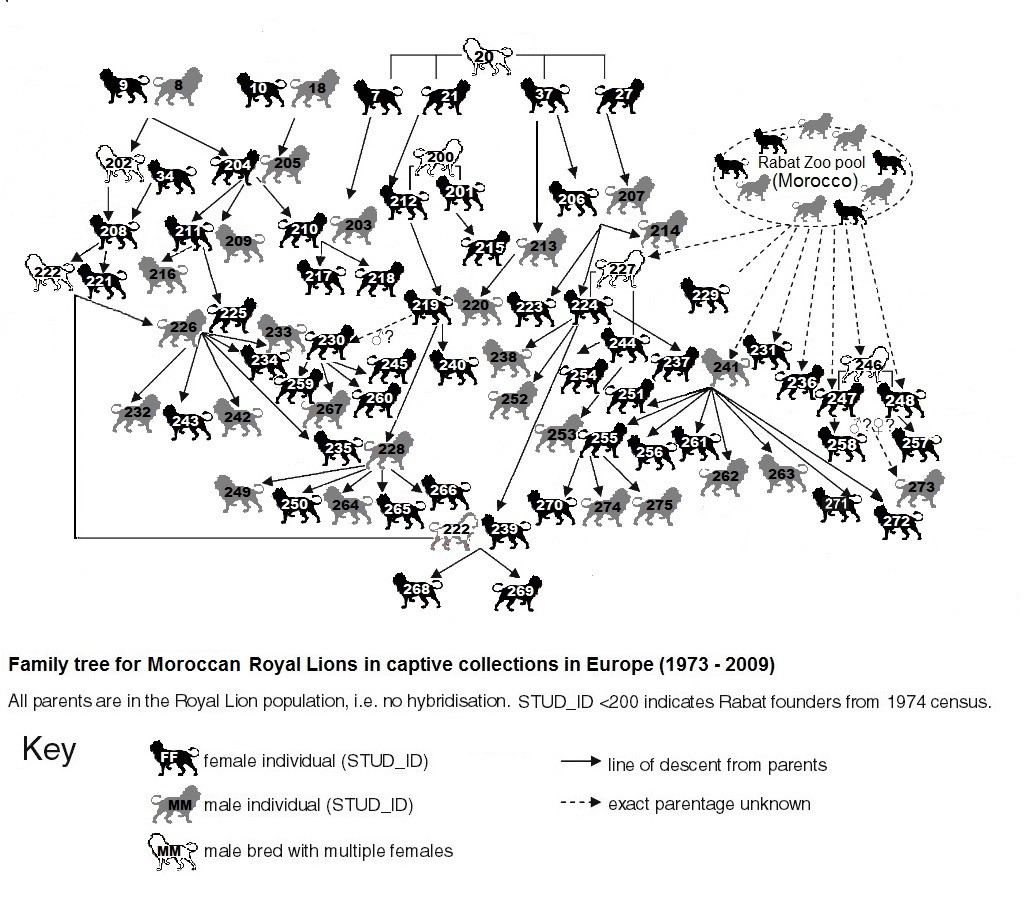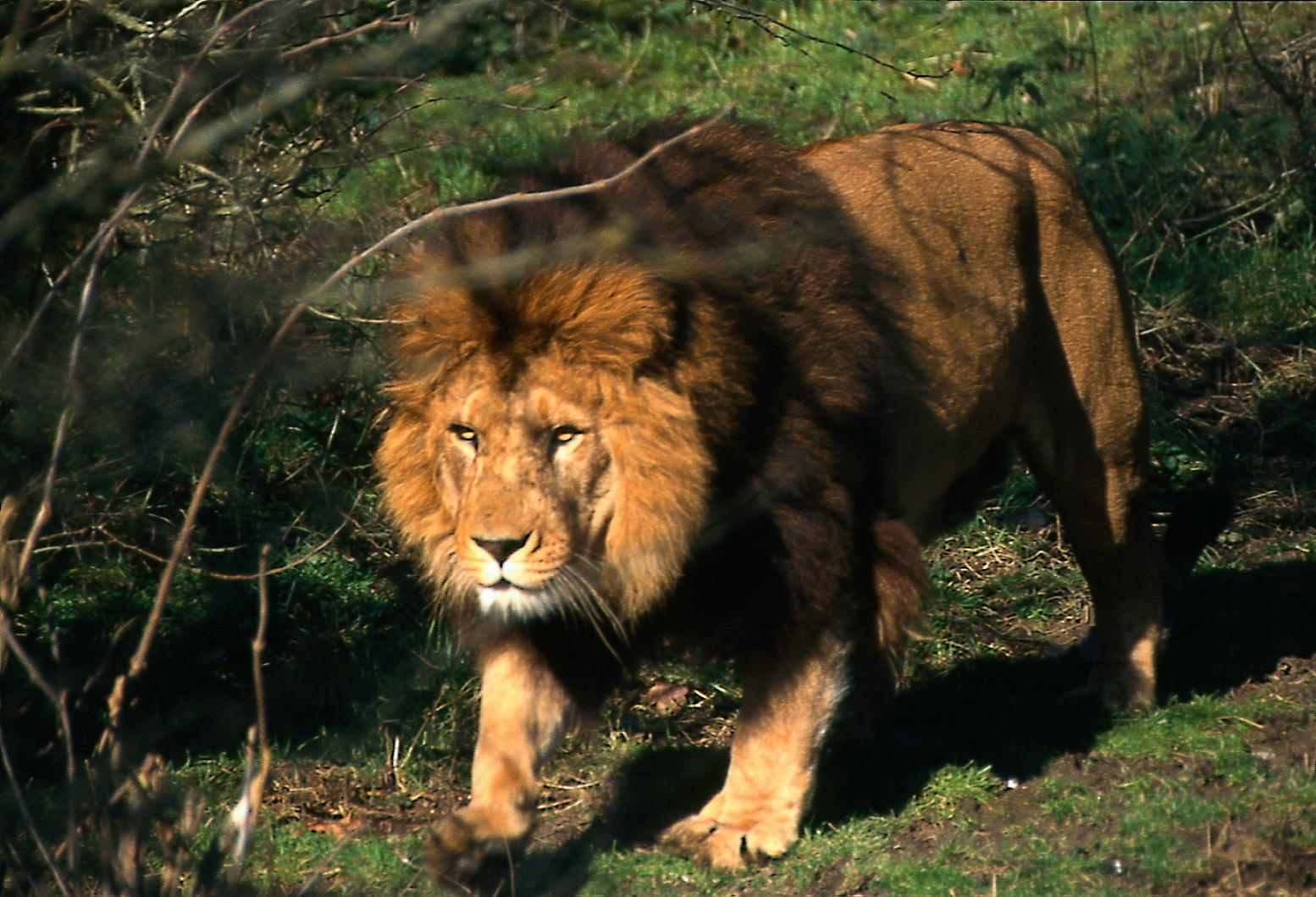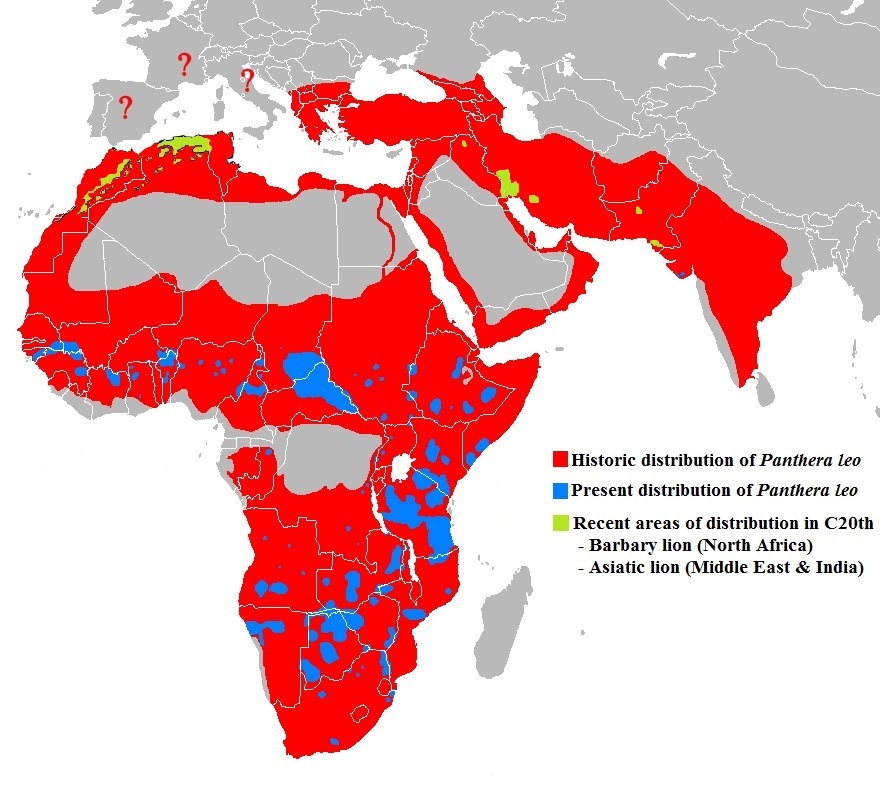 By the end of the 1990s efforts by several zoos to engage in a pan-European breeding programme for lions derived from the King of Morocco’s collection was beginning to fade. Only Port Lympne continued with an active breeding group, and a male from Rabat zoo (number 241 on the diagram opposite) was brought in to reinvigorate a pride which was developed from animals imported from Washington zoo in the 1980s. Up until that point they had reached a point of inbreeding within a family group.
By the end of the 1990s efforts by several zoos to engage in a pan-European breeding programme for lions derived from the King of Morocco’s collection was beginning to fade. Only Port Lympne continued with an active breeding group, and a male from Rabat zoo (number 241 on the diagram opposite) was brought in to reinvigorate a pride which was developed from animals imported from Washington zoo in the 1980s. Up until that point they had reached a point of inbreeding within a family group.
Research led by Black and Yamaguchi identified all the remaining animals of known
Moroccan heritage in zoos worldwide. Aside from the animals in Rabat Zoo (Morocco), all the other descendents were is zoos in Europe, plus two animals in Israel. However there had been no transfers since the early 2000s and those which had occurred had not given rise to new cubs.
The family tree derived from this work allowed potentially suitable (unrelated) pairs to be identified and for breeding transfers to be arranged by interested zoos. This has enabled reinvigoration of the zoo stock.

In the early 200os nearly a quarter of Moroccan Royal lions in European zoos were related to Suliman, the male at Port Lympne (photo: N. Yamaguchi).
Further Reading:
Black S, Yamaguchi N, Harland A, Groombridge J (2010). Maintaining the genetic health of putative Barbary lions in captivity: an analysis of Moroccan Royal Lions. Eur J Wildl Res 56: 21–31. doi: 10.1007/s10344-009-0280-5
Yamaguchi N, Haddane B. (2002). The North African Barbary lion and the Atlas Lion Project. International Zoo News 49: 465-481.

